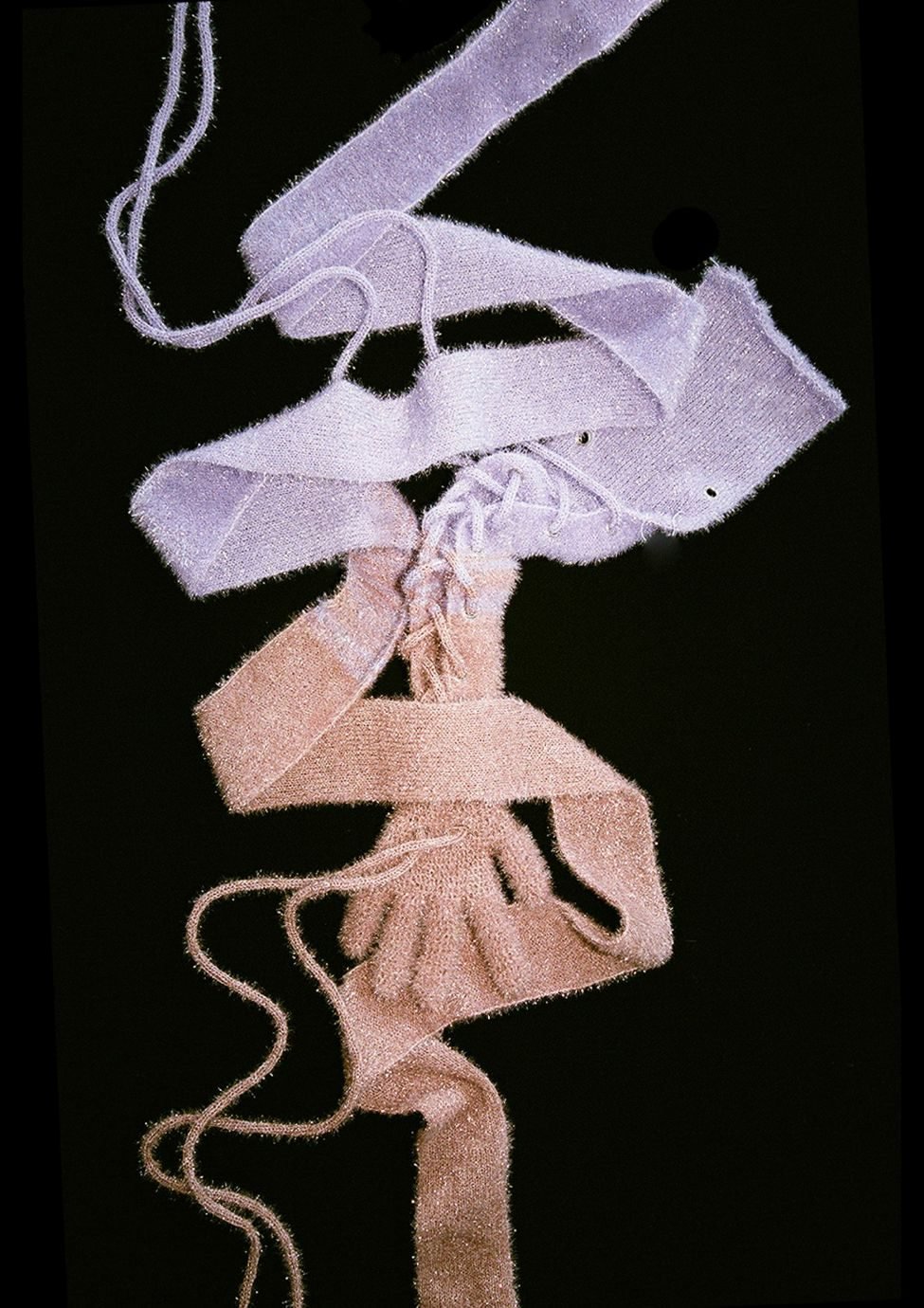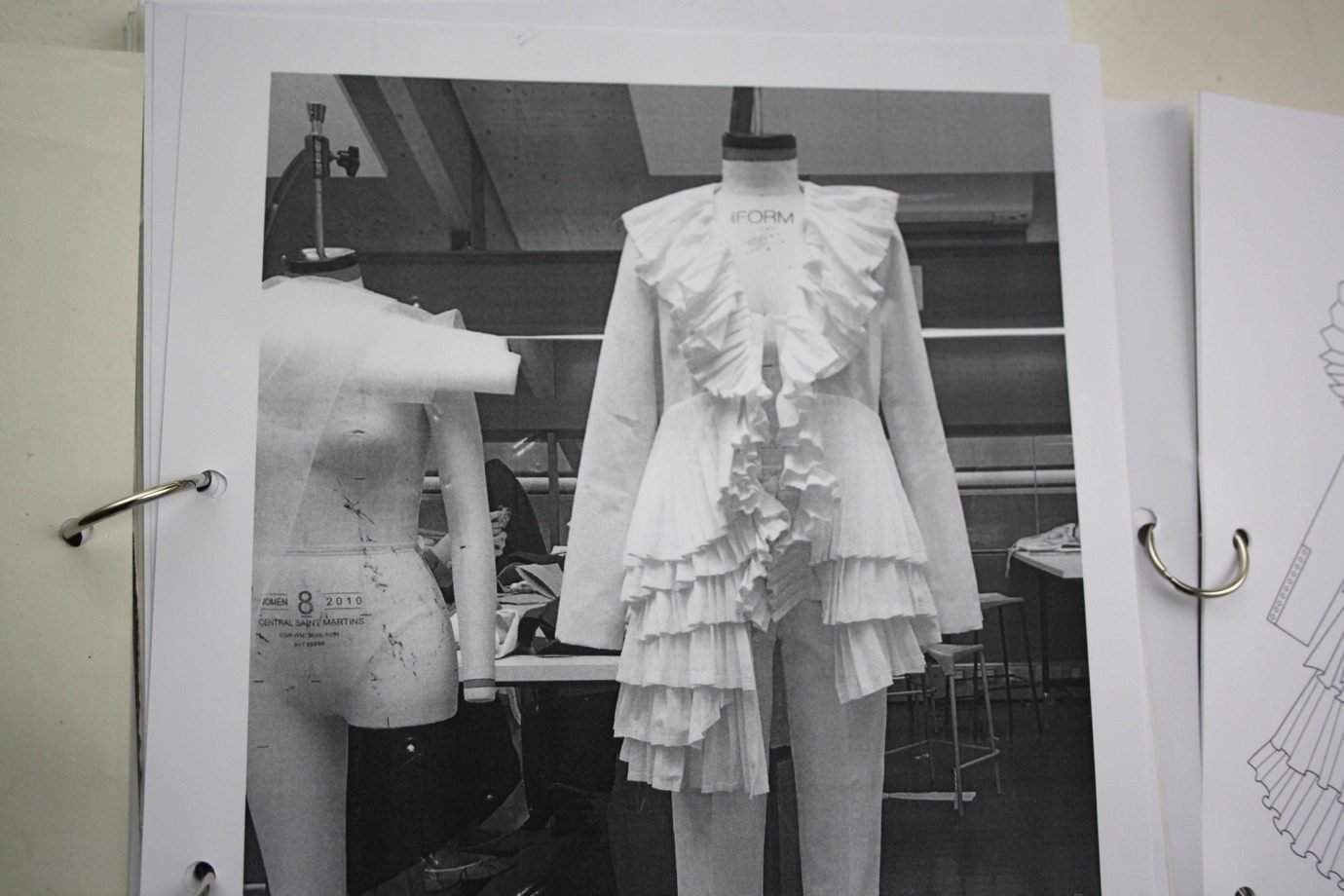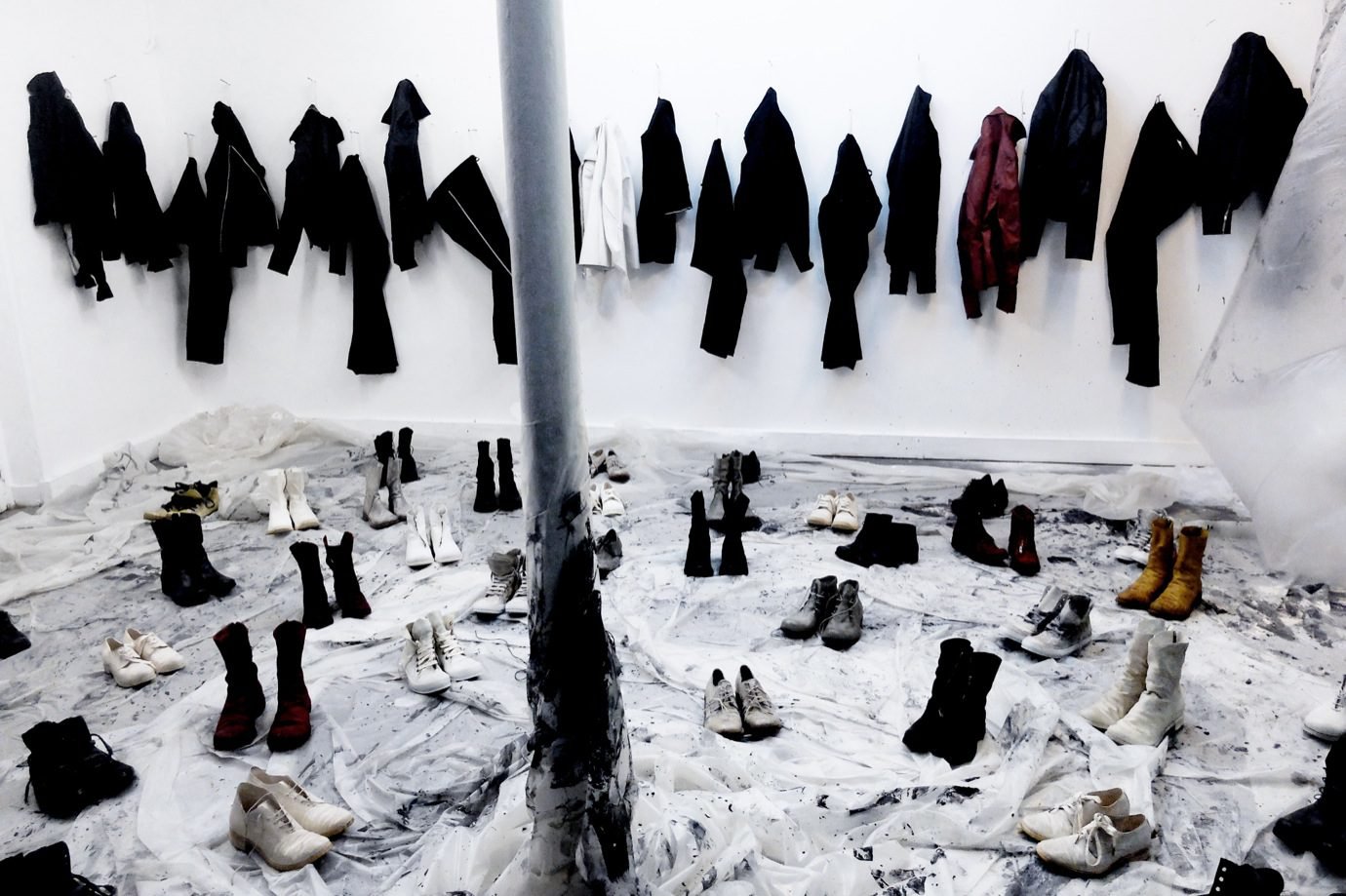Change is something that needs time, dedication, and room to grow. A unique opportunity for change was born throughout the other crisis that is COVID-19. Whether we decided to reset fashion, rethink fashion, forget fashion or wake up fashion – there was a sense of change in the air. However, there were insufficient results. For it seems that things in fashion haven’t changed, rather that they have become more digital.
Wake up fashion, sustainability still doesn’t mean anything
“The biggest issue with fashion is the mindset”: An interview with Blue Sandford
In writing “Wake up fashion sustainability doesn’t mean anything” part 1 this time last year, it was easy to conclude that the term sustainability in itself was a bit too vague and too undefinable to exist. We knew then sustainability was happening, it was trending, it was in countless mission statements – but none of that really meant anything.
We know sustainability is happening, it is trending, it exists in countless mission statements – but none of that really means anything. One prime example is that the sustainable sector of fashion was perhaps the most ‘called out’ in wake of the #BLM protests and emphasised a whole new level of virtue-signaling and greenwashing within the industry. Companies were called out for their insensitive work environment and poor treatment towards people of colour and platforms that regularly promote sustainability in fashion were called out for its racist work culture.
Meanwhile, brands such as Chanel have decided to embark on a new ‘sustainable’ journey to reduce their emissions by 50% by 2030 with their new ‘Chanel 1.5’ mission, when only about two years ago they were holding luxury bonfires to eliminate unsold stock. It’s fair to assume that in 2020, the word sustainability still may not mean anything more than it ever meant – other than it is now a status symbol, an accessory to ensure that a press release sounds more mellifluous.
Now we are tasked with not only redefining (the undefinable) word that is sustainability, but we are tasked with finding a place for sustainability in fashion to exist when there are so many other issues surrounding us.
Once upon a time, you needed a credential to provide an influential opinion. Now, you need zero credentials to post or publish opinions and spark reactions with them. If that equates to content replacing journalism and political polarisation replacing political bipartisanship, what does that leave for the opinions with the credentials?
Well, it’s safe to say that the pre-established leaders aren’t doing enough. If one thing is for sure when it comes to this complacent topic that is sustainability is that it’s the younger generation that is holding the lack of leadership accountable better than anyone else.
“We need to radically shift our mindsets when viewing these things. It’s virtue signalling, making you feel like you’ve done your part because you’ve bought your sustainable jumper then go home.” – Blue Sandford
When it comes to credentials in the topic of sustainability, Blue Sandford, a key member in Extinction Rebellion Youth, comes to mind. Named by The Times as Britain’s Greta Thunberg, Blue recently launched her own handbook, Challenge Everything: An Extinction Rebellion Youth Guide to Saving the Planet, Sanford’s mission to save the planet is far from undefinable. When it comes to the fashion industry, Blue explains that “sustainability is not going far enough. We need to radically shift our mindsets when viewing these things. It’s virtue signalling, making you feel like you’ve done your part because you’ve bought your sustainable jumper then go home.”
Growing up between two extremes, the Hebrides of Scotland with no cars and electricity, and the middle of London, witnessing the best and worst of modern society, the 17-year-old activist embodies a sense of leadership that’s missing from fashion. For Sandford, the word sustainability is defined by fear. “My dad’s been an environmental campaigner for a long time, mostly working with small organisations. He felt like nothing was really changing. So, he started looking at the psychology behind sustainability and how to get people to actually listen to what you’re saying and react, and then he joined Extinction Rebellion.” Now, a founding member of Extinction Rebellion Youth London, Blue works through non-violent protests and business boycotts to inspire other young people to help solve the climate crisis by questioning everything that we do. Blue explains that “I hadn’t realized at all how bad things were and it really scared me so I joined XR”.
“Art and its self-expression when it’s done in a conscious way but at the moment it’s not. It’s just things that are bought and thrown away for clout or for social media.” – Blue Sandford
Fear, it’s all the same yet has the power to make people react and evolve. “The biggest issue with fashion is the mindset”, she continues when asked about the climate crisis in fashion. Sandford’s handbook forces the industry to look within when understanding the word sustainability. It’s our own behaviourisms and relationships with consuming fashion that have allowed fast fashion to become so dangerous. It’s the belief that our clothing should cost the same as a happy meal, and that buying so much of it will make us feel more fashionable. Blue believes that fashion is, “art and its self-expression when it’s done in a conscious way but at the moment it’s not. It’s just things that are bought and thrown away for clout or for social media.”
The binge and purge cycle that is fast fashion is a problem of the psyche, which gets taken advantage of by those looking to make a profit. Though this cycle has a simple principal, it is so wildly misunderstood, hence the surge in sustainable statuses despite knowing what the word even means. “I think that it’s a weird word ‘sustainable’.” Sandford explains, “If we actually want to solve the crisis, we have to go beyond sustainable products. I think sustainable, the term, is really damaging because it’s created this virtue-signalling and greenwashing fashion.”
Sometimes when we think of tackling big issues like saving the planet, we just exhaust ourselves. Yet it’s the small issues that need the most romanticising, and the big issues that we need to be the most realistic about. To Blue, “Sustainable doesn’t mean anything anymore. It just makes us feel like we’re conveying this concept that we’re doing the right thing, we’re ethical. But there’s no actual guidelines or accountability if your product is actually sustainable and if you can carry on with it.” Needless to say, the incremental change pre-or post-COVID (whatever that even means) isn’t doing enough. “The issue is that now it’s almost more sped up. There’s a new mindset that now, that we are out of lockdown, we have to catch up and produce all this stuff.”
Over the course of lockdown, the pressure to be ‘ethical’ or ‘sustainable’ as a fashion brand was turned up. Social media has given a voice to many fashion brands to speak on social issues whose conversations they never would’ve been a part of previously if it weren’t for their social media presences. With that came many positive initiatives such as the 15% pledge that was founded by Aurora James of Brother Vellies. The pledge calls on major retailers to dedicate 15% of their shelf space to Black-owned businesses.
James proved that in a crisis, there’s still powerful leadership. This authentic leadership came from fusing ethics with sustainability, resulting in long-lasting solutions, not just trends and hashtags. According to a global newswire survey, the ‘global ethical fashion market’ has reached a value of about 6.35 billion in 2019, and is set to grow to $8.25 billion in 2023. According to the report,t his growth is mainly because of “the awareness about using ethical fashion for sustainability.” The survey details different ‘new sustainable’ initiatives to watch for, that range from ‘H&M’s Conscious’ growth strategy, businesses, governments initiatives for the ‘development of ethical fashion’, which is ‘expected to drive the ethical fashion market in the forecast period.’ Which all seem to stay true to the theme of vagueness in sustainable fashion.
“Social movements now get so famous, and then you never hear of it again. That’s what it’s like with all these social media trends now, it’s the biggest thing and then it’s like it never happened.” – Blue Sandford
When it comes to this idea of “ethical fashion” in 2020, Blue explains, “Many ethical or sustainable initiatives from brands are just ‘songs of the summer’ so to speak. Social movements now get so famous, and then you never hear of it again. That’s what it’s like with all these social media trends now, it’s the biggest thing and then it’s like it never happened.”
Now, more than ever before, the fact is that most fast fashion brands are particularly skilled at tapping into consumers’ wants and needs. The only difference is that now ‘sustainable’ and ‘ethical’ are on the menu. The reality is, sustainable or not, the entire system that is fast fashion production and our relationship with consuming it is not sustainable.
Blue believes that, “Some people are genuinely trying to have less of an impact, but it’s the wrong end of the stick. We don’t need to become more ‘sustainable’ whatever that means, we need to be starting to consume less and cutting out destructive forms of production rather than just giving it a new name like ‘organic cotton’. Moving forward should be focusing on reworking clothes and changing our mindsets. Fashion needs to be more aware of the world and therefore, move a lot slower. It’s all about attention spans now, so things coincide with social media and keep us entertained.”
So, if anything, in 2020, it seems that sustainability for fashion brands means survival. With that comes a new need for brands to speak on issues that are deeper than the word sustainability itself. Any company that falls back on the ‘we have always done X this way’ is walking on thin ice, from a moral and marketing perspective. If it wasn’t for the art of algorithms and attention spans in fashion, perhaps we wouldn’t turn to fashion brands at all to take on any social issues. Perhaps this is also why so many miss the mark completely.
“Cancel culture now is a vacuum – once a brand gets ‘cancelled’ another one that is arguably just as bad will fill the space.” – Blue Sandford
On cancel culture’s impact on the sustainable fashion scene, Sandford states that “Cancel culture now is a vacuum – once a brand gets ‘cancelled’ another one that is arguably just as bad will fill the space. Everyone makes mistakes, but if you don’t give someone the chance to learn from it they will just shut down any opportunity to learn. With cancel culture, there’s no second chance. Inflicting change needs to be about learning and growing from your mistakes. Social media can be a really diverse platform to share and connect with people but at the same time, social media is an industry made for profit. They want people on social media buying products for as long as possible, so they’re not letting the platforms be what they really should be.”
Perhaps the only way to get anywhere with the word sustainability isn’t by asking others to define it – but asking ourselves what it means to us. For the vague nature of the word exists to be morphed into our own individual lifestyles. In the words of André Gide, everything that needs to be said has already been said, we just weren’t listening so it needs to be said again. That’s the case with sustainability, as we drift from listening to the old-way thinkers and turn to youth leaders like Blue Sandford to guide us through social complexities. If now is the time to really listen, we can use Sandford’s manifesto to finally define sustainability. By challenging everything, but not by taking the easy way out and attempting to cancel celebrities or corporations who we know very well do not care about saving the planet unless they can profit from it, but by challenging ourselves.









